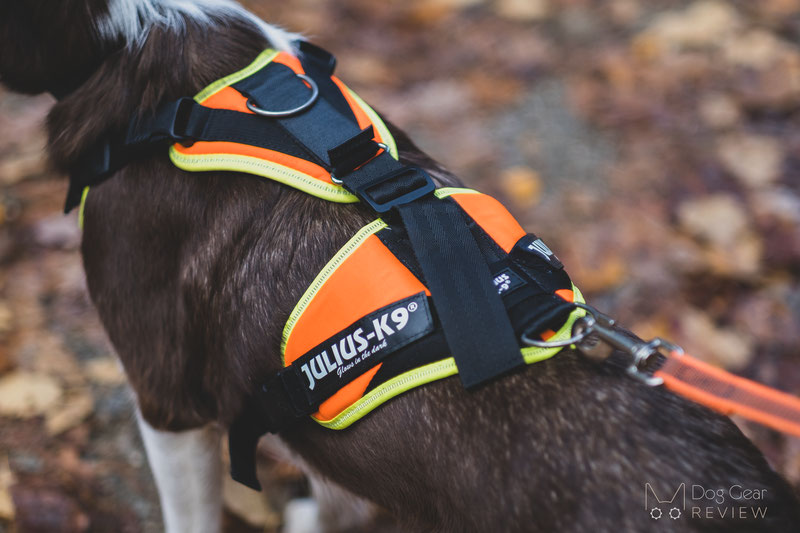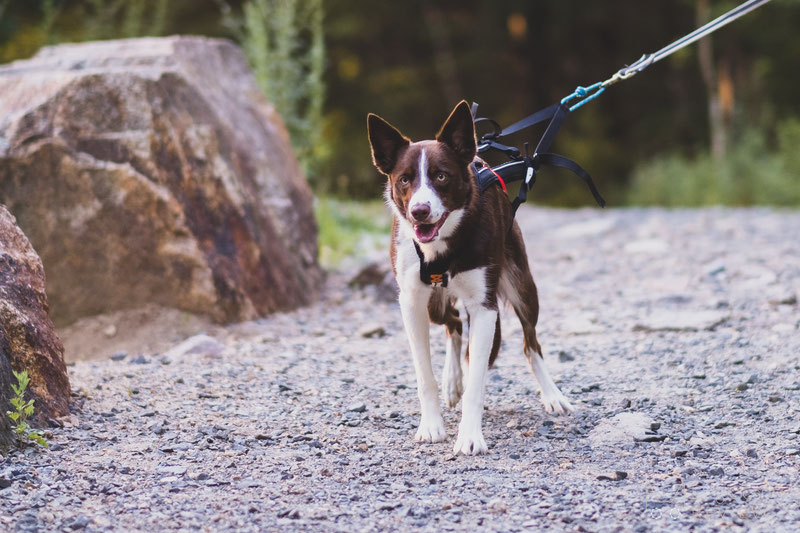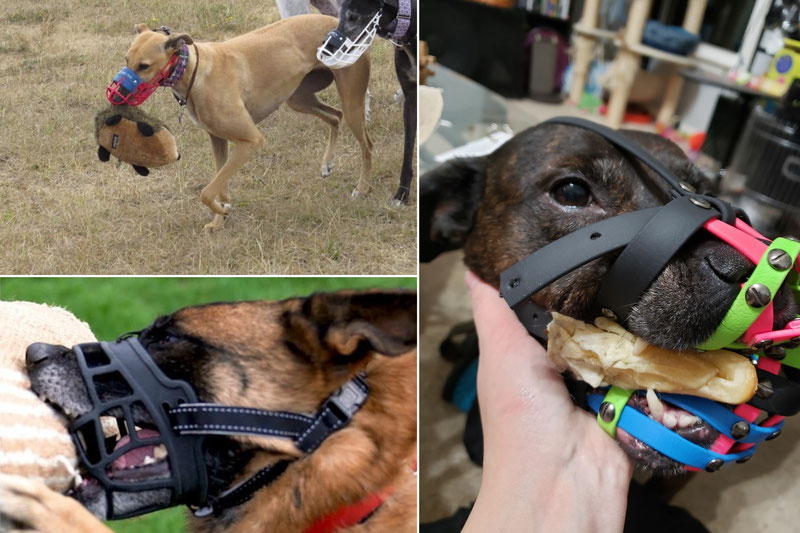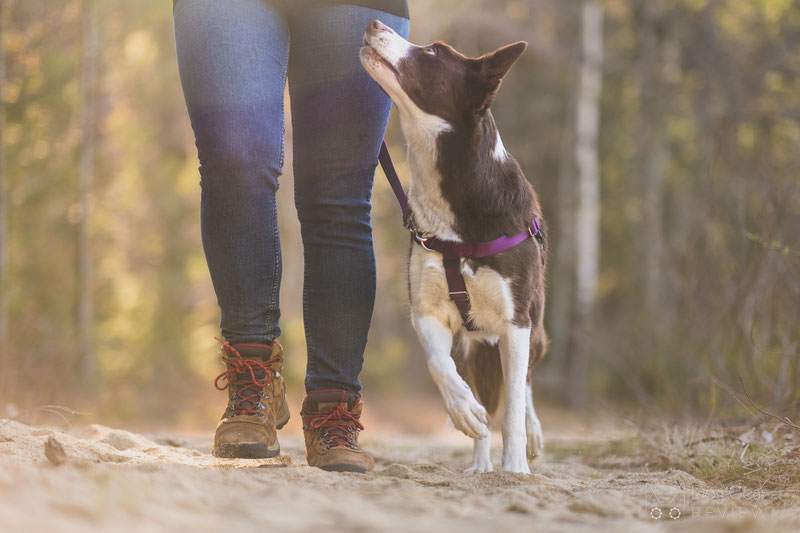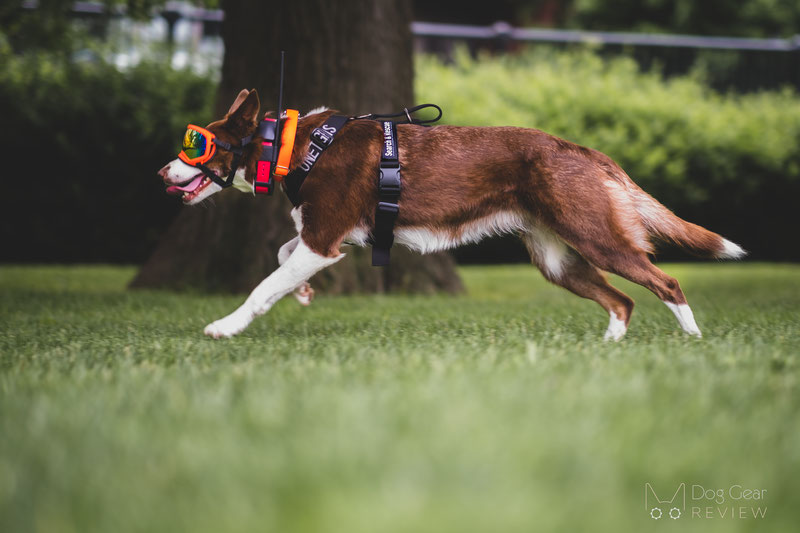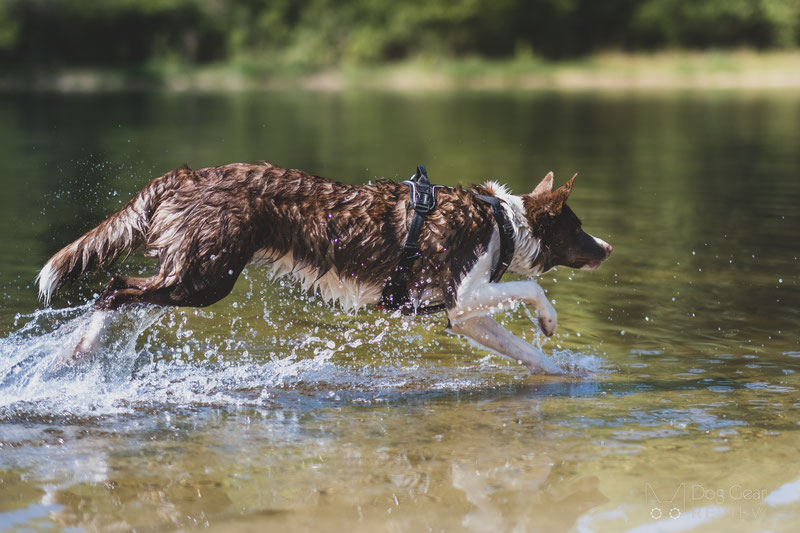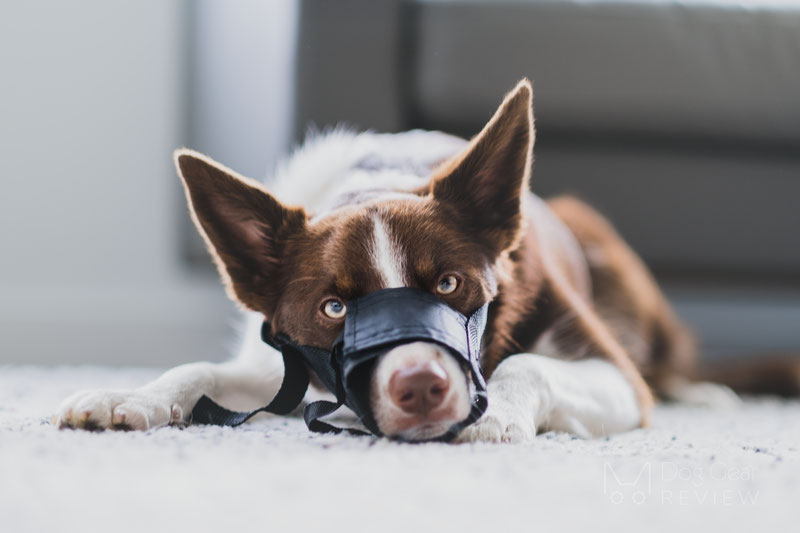The position of the leash attachment point on the back is mainly the question of personal preference based on what you use the harness for and how your dog walks on the leash. Still, there are a few important pros and cons that might help you choose.
Pros and Cons of Leash Attachment Close to the Neck
In general, having the leash attachment close to the neck will give you the best steering power. The tradeoff is that it rotates the front of the harness upward when there the dog pulls. This can put pressure on the lower neck and usually doesn’t do a good job distributing the pressure on the chest.
This can be hard to see on photos, even with Mia’s shorter hair, but I hope they will be somewhat helpful. The harness below has the leash attachment point right behind the neck, and the harness basically works as a loose collar at the base of the neck.

Pros and Cons of Leash Attachment Farther Back on the dog
Using a pulling point farther back will still somewhat rotate the harness upward on the chest, moving the chest straps towards the armpits but much less than the previous option.

As you put the pulling point farther back, you will keep losing steering power/ control over the dog’s head, but the pressure distribution will fall more and more purely on the chest.
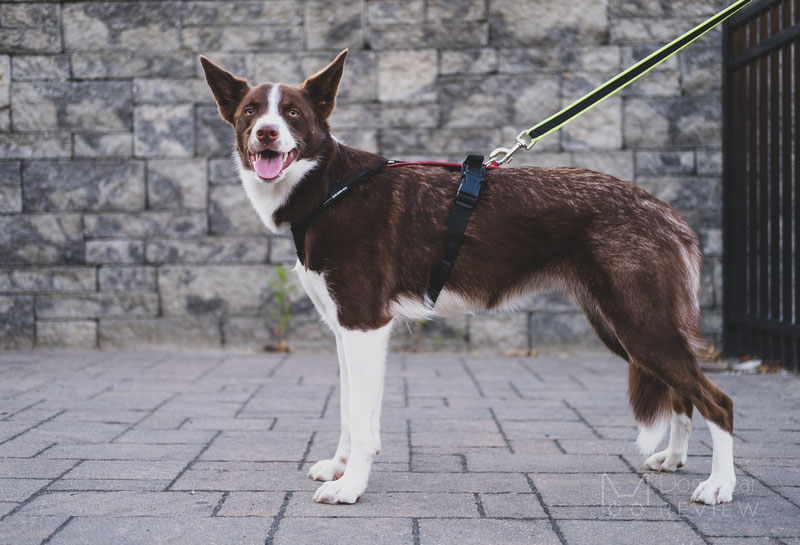
In the case of pulling sports, they use different long harnesses where the leash attachment point is at the base of the tail or even behind the dog because that provides the best weight distribution on the dog’s chest. The con of this setup is that you would have a tough time controlling the dog in a busy environment, and if they suddenly stop, the harness will slide up on their back.
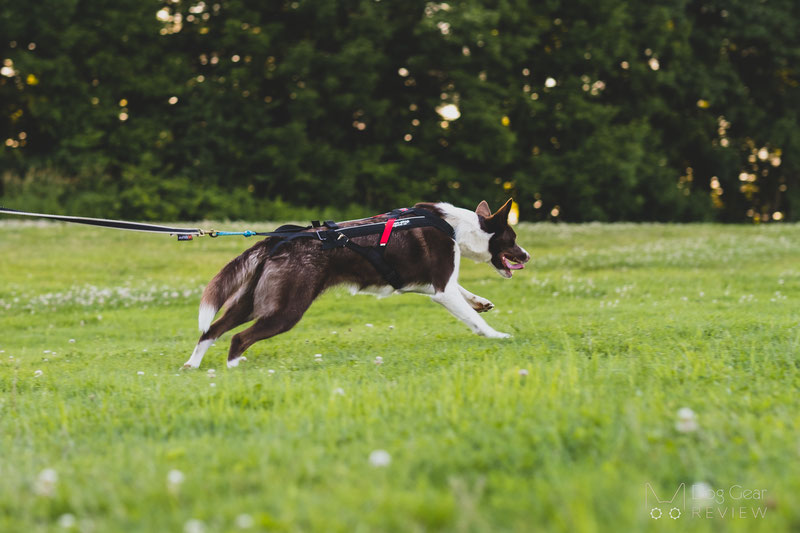
Pros and Cons of Leash Attachment on the Middle of the Harness
Having the pulling point on the middle of the harness’s backplate seems like a good compromise between the two options mentioned above. It’s true that it somewhat provides the advantages of both setups, but it also has the cons of both.
With this setup, we get into very slight differences that are hard to pinpoint. The behavior of the harness is more visible with softer materials, like the red Truelove harness below. When the leash pulls the middle of the harness, the neck section shifts up, still mostly behaving as a low-sitting, loose collar.

This setup is doing a slightly better job in pressure distribution than having the ring right behind the neck, but the harness still rotates and moves the chest straps into the armpits. The role of the chest straps here is just to keep the harness sliding more forward, while in the case of the attachment point on/behind the chest straps, there is pressure on all straps.

Summary
As always, we will not tell you which leash attachment option is “the best” because it all depends on your needs. We want to give you information to decide what’s best for you and your dog.
Having the leash attachment point close to the neck is a good option if your dog doesn’t pull on walks and you want to have good control.
The leash attachment point farther back will be much more comfortable for the dog if they pull into the harness from time to time and protect their neck if they start lunging on the leash. At the same time, it doesn’t provide great control over the dog. Attaching the leash anywhere behind the middle of the dog’s back is usually only beneficial if you have a well-trained dog doing some pulling sports or mantrailing.
The leash ring in the middle is excellent if the dog isn’t pulling much or learning leash manners. These harnesses usually don’t cover much of the dog’s back and are not sliding up as much if the dog suddenly stops, and you have to pull them forward.
As always, be sure the harness is a good fit for YOUR dog. If you need help deciding, check out our article on harness fitting!
